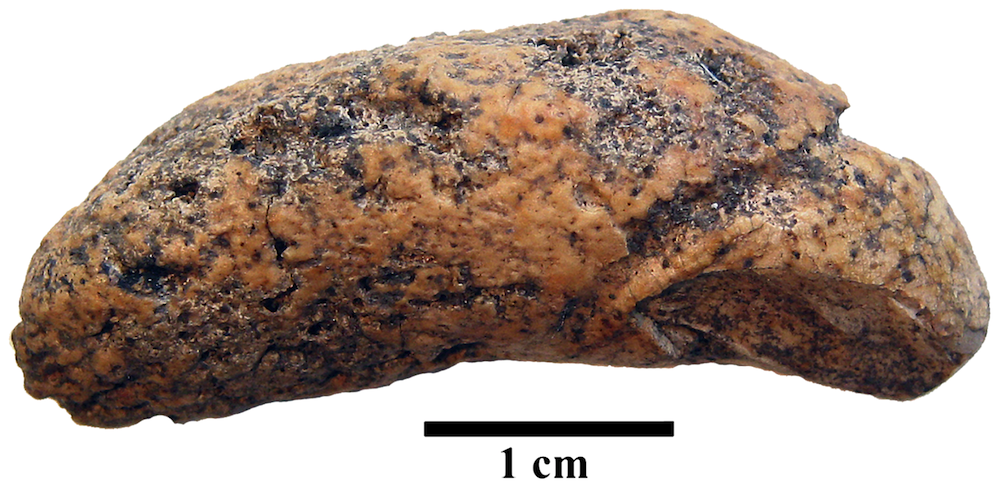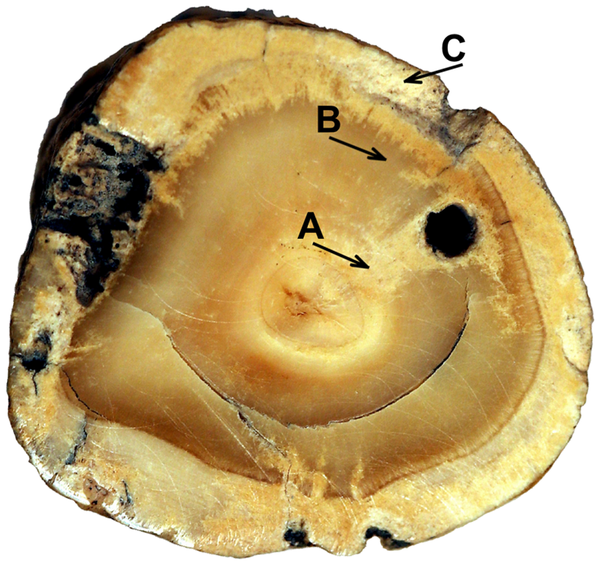Fossilized Bladder Stone Uncovered in Medieval Polish Cemetery

It may look innocuous now, but this little stone may have killed someone 700 years ago.
The rough, kidney-shaped object was found in a medieval cemetery in Poland, and a new analysis has revealed it is actually a rather large bladder stone.
The stone was discovered in Gdańsk, a city on the Baltic coast of northern Poland, where archaeological excavations in 2001 uncovered a medieval burial ground that contained a thousand graves. Since this cemetery was used for about 800 years, the dead were not left to rest in peace; some corpses were exhumed and regrouped with other gravemates to make way for new bodies, according to the researchers, who reported the find in the journal PLOS ONE this month. [16 Oddest Medical Cases]
The stone was found among the skeletons of four badly preserved bodies: a female between 20 and 39 years old, an older male between 40 and 55 years old, a teenager and a fetus (the sex was not determined). The researchers don't have a precise date for the burial of the corpses, but they think these bodies were interred between the mid-10th century and the mid-14th century.
The mass is about 1.5 inches (3.9 centimeters) long and 0.5 inches (1.25 cm) thick, and it weights about 0.25 ounces (6.87 g). When the researchers cut into the brownish stone with a diamond blade, they saw that it had yellowish concentric layers inside, characteristic of bladder stones.

The researchers think the stone may have come from any one of the grave's occupants, except the fetus. And whoever it belonged to was rather unlucky. The rough, porous edges of the stone suggest that "a very aggressive bacterial inflammation" developed in the last stages of the stone's formation, which was likely the cause of death, the researchers wrote.
It's not the oldest — or the biggest — ancient bladder stone to be found. More than a century ago, Egyptologist Grafton Elliot Smith found what might be the oldest bladder stone among the remains of the pelvic bones of a teenage boy who was buried in ancient Egypt around 4800 B.C. In 2008, researchers reported the discovery of a giant bladder stone — measuring nearly 3 inches (7.5 cm) across — in the pelvis of a 19th century natural mummy.
Sign up for the Live Science daily newsletter now
Get the world’s most fascinating discoveries delivered straight to your inbox.
Bladder stones form when organic compounds and inorganic crystals in urine compress into hard masses in the bladder. Some stones might go unnoticed, but sometimes they can irritate the bladder wall or block the flow of urine and cause painful urination and abdominal pain. Sometimes larger stones need to be broken up into smaller pieces or removed through surgery to prevent infections or further complications. Doctors have experimented with medical treatments for urinary stones for centuries. As far back as 2,000 years ago, the ancient Greeks used a procedure known as a lithotomy to surgically cut through the body in an attempt to remove stones, according to a history of the bladder stone published in the Journal of the Royal Society of Medicine.
Residents of medieval Gdańsk may have had access to such a procedure, but, as the authors of the study wrote: "We can only speculate that this individual was not one of Gdańsk's affluent citizens, who doubtless took advantage of the stone removal procedures already available at the time."
Follow Megan Gannon on Twitter and Google+. Follow us @livescience, Facebook & Google+. Original article on Live Science.










